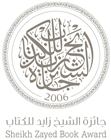The Way of Inanna
A Heroine’s Guide to Living Unapologetically
by Seana Zelazo
Myth Made ManifestOver 4000 years ago in ancient Sumer, some of the first mythographers inscribed the stories and myths of the Goddess Inanna on clay tablets in cuneiform. These incredible findings were unearthed, and the fragments were painstakingly pieced together and translated. What they discovered were the ways Inanna was heralded as a goddess who embodies polarities: impatient and deliberate, an attentive lover and fierce warrior, connected to fertility as well as death-making her an accessible, relatable, and inspiring representation of the Divine Feminine as she stands in her power and multidimensionality. The Way of Inanna is a field guide to heart-centered living through the wisdom of the Sumerian Goddess of Love. Each chapter deconstructs sacred narratives in which the Goddess navigates the seven gates of her soul's journey from awakening to ascension. More than a simple retelling, the book is myth made manifest in which Inanna becomes a means to accessing our own ascension and alchemical magic within our modern, contemporary context.





























